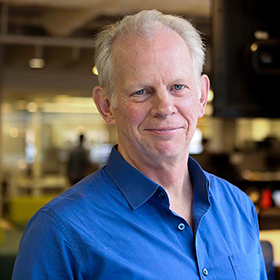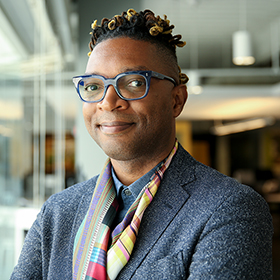Place-based funders are eager to explore what it looks like when philanthropies build authentic relationships with community members. The 12 peer funders who gathered in a learning group in 2020 shared how they were adopting a “service first” mindset, were recognizing that there is no single best practice for tapping into community leaders’ knowledge and expertise, and were sharing decision making with (or ceding to) community leaders when possible. All were embracing the notion that, when it comes to building community-centered teams, lived experience is at least as relevant as subject-matter expertise.
Positioning yourself to learn from the community
As a first step toward building meaningful relationships with residents and community leaders, participants discussed the need to change how they work. Their organizations had sometimes operated in a top-down way, by taking a directive approach with grantees. To be of service to their communities, many agreed they would benefit from leaning further into learning from grassroots groups, block leaders, and residents themselves.
If you don’t have honest, open-forum conversations, you’re not going to have the impact you want. You have to be in it to win it for your community.
Manuel Santamaria, vice president of community action at Silicon Valley Community Foundation (SVCF), shared how trust is earned by showing up at community forums time and again, actively listening instead of opining to community members, and remaining open even when conversations heat up and one’s very presence is called into question. “It’s been agonizing sometimes, sitting in front of a room with hundreds of people and getting grilled on why we do certain things and why we don’t do other things,” he conceded. “It’s hard to maintain that vulnerability and transparency, but you have to do it.
“If you don’t have honest, open-forum conversations, you’re not going to have the impact you want,” Santamaria added. “You have to be in it to win it for your community.”
Nina Revoyr, executive director of Ballmer Group’s philanthropic efforts in Los Angeles County and California, shared that while it’s not always comfortable, frank feedback from frontline organizations often reveals opportunities to learn. She once got a phone call from a community leader who was frustrated over the fact that his community-led initiative was not funded at the same level as a more institutionalized program.
“He chewed me out pretty good,” Revoyr recalled. “Not five minutes later, I got a call [from another leader], apologizing for the first guy. I told him there was nothing inappropriate about calling to give feedback. Being justifiably angry and pointing out the faultiness of how I approached something was important for me to hear. The second people can’t say things to me, we’ve lost trust.”
The second people can’t say things to me, we’ve lost trust.
For Seattle Foundation (SeaFdn), receiving and responding to feedback is not a one-off event. In 1991, the National Committee for Responsive Philanthropy (NCRP) published the results of a survey of six large cities and concluded that Seattle Foundation was less than equitable in supporting nonprofits helmed by Black and Latino leaders and other people of color. This was due in large part to SeaFdn’s discretionary funds being directed to capital and equipment grants, which favored large, predominantly white institutions that had the resources to apply for them.
NCRP’s critique sparked difficult but necessary conversations within SeaFdn, resulting in the launch of Neighbor to Neighbor, a grants program supporting grassroots organizations that support people who are working to reverse the effects of poverty and racial disparities in their communities. Over the next three decades, SeaFdn shifted 85 percent of its discretionary funding to nonprofits with leaders who are Black, Indigenous, and people of color (BIPOC) and that serve BIPOC communities.
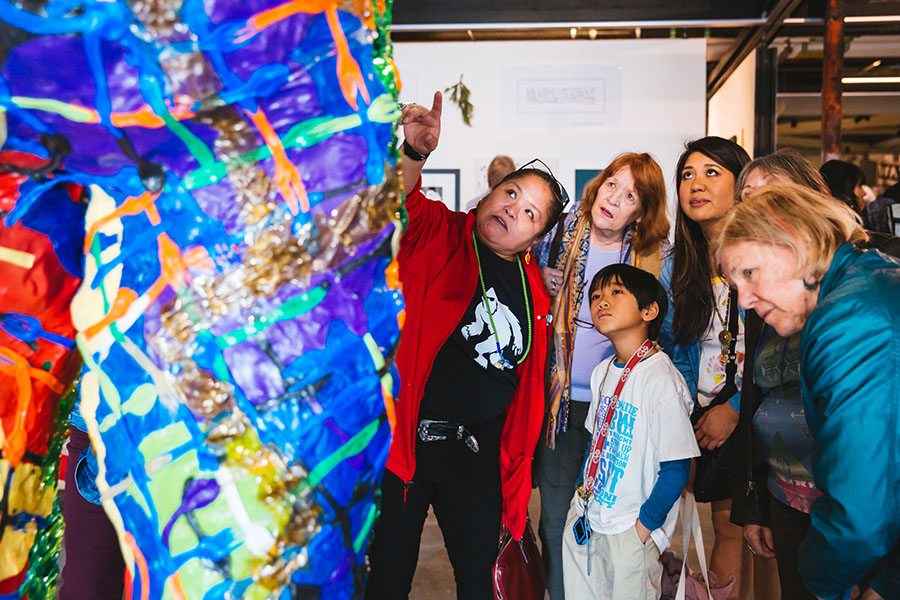
Nevertheless, in August 2020, NCRP issued another report, which found that when taking into account the totality of SeaFdn’s grantmaking, it was still woefully underinvesting in Black communities. Kris Hermanns, SeaFdn’s chief impact officer, welcomed the unvarnished feedback from groups like NCRP, not least because it is a call to action for SeaFdn to engage donors in helping to influence nondiscretionary dollars—which are directed by donors—so more of its funding flows to BIPOC communities advancing racial and economic equity.
“We’ve put ourselves in a position over the past 30 years where [NCRP and others] will continue to call us in to do better and do differently,” said Hermanns. It’s all part of being in community, with community—continuously learning and adapting, by opening up to voices from impacted communities and highlighting what’s not working, not just what is.
These funders also grappled with how to demonstrate that their organizations are committed to building trust-based relationships with community members. Some even wondered whether it made sense for them, as executives of foundations, to connect individually with residents.
For example, one newly appointed funder made it a practice to regularly meet with dozens of BIPOC community members and grassroots leaders, often holding 15-minute personal conversations. On the other hand, another wondered: “Is it appropriate for me to hold relationships? For all these people to still be calling me directly?”
Although they landed in different places, all the peer funders agreed that the work of serving communities cannot sit with one leader—it needs to be shared across staff. At one foundation, the president has been working with staff on how to “show up” with local stakeholders, even digging into such details as authentically “embodying gratitude” in emails. That might strike some as an unusual use of a chief executive’s time. But it is one important part of a larger, holistic effort to consider how the organization’s voice is received in the community.
Recognizing there are many pathways to learning with and from communities
Funders in the group discussed a variety of approaches to learning from community members, given that no single “best practice” is always effective in all scenarios. One asked: “I’ve heard a lot about community advisory groups. But can they really represent the range of perspectives from broader outreach?” The answer from most of our participants: there is value in deep, ongoing relationships in addition to engaging more broadly with communities. Here are three rubber-hits-the-road examples, from the Bay Area, New York, and Detroit.
In the southern part of the San Francisco Bay Area, Silicon Valley Community Foundation launched a president’s advisory community council of 22 community leaders, who meet with the foundation’s leadership team every other month. Community representatives, who are compensated for their time, provide the foundation with realtime updates on what’s happening in their neighborhoods and fields of interest, including the arts, environment, and public health. “We’re interested in them as leaders, not because of the organization they represent,” said SVCF’s Santamaria. “So folks don’t come to the table seeking funding for their individual endeavors, although they might for their field— which allows for more open conversations.”
SVCF balances the input it receives from this fixed set of community representatives with other forums for eliciting constituent voices. For example, when COVID-19 swept into the community, the foundation reached out to its hardest-hit constituents. In less than three weeks, it organized 10 focus groups, each comprised of people who were most impacted by the pandemic, including young mothers, undocumented workers, and young people of color.
{^widget|(path)%2fPersona-Widget-Content%2fRace-and-Place-based-Philanthropy%2f%2525|(name)BSG.PersonalizedCard|(tileposition)right|(widget_displayname)*+Personalized+Card|(width)|(height)^}The focus groups helped shape the foundation’s emergency response to the pandemic by sharpening its understanding of the full breadth and depth of COVID-19’s impact and reality checking strategy-design ideas: Does this make sense? Is it on point? “You cannot close your eyes to the scale of suffering when you know the name of the mother trying to keep a roof over her children’s heads,” said Gina Dalma, SVCF’s executive vice president of community action, policy, and strategy. “There’s just no substitute for direct, authentic engagement.”
In New York City, Robin Hood used to think of “community” as its grantee-partners, but more recently it has pivoted to engaging directly with constituents. Some years ago, Robin Hood launched Blue Ridge Labs, which creates early stage social tech ventures, such as Unlock NYC for spotting and reporting housing discrimination. Operating with the mindset that people who are closest to social challenges often have eye-opening insights into how to solve for them, Blue Ridge Labs paid community members to join its Design Insight Group, where they regularly tested and shared feedback on work-inprogress products.
However, as the pandemic began to claim the lives of so many New Yorkers, Robin Hood started partnering directly with the Design Insight Group, whose members contributed on-the-ground perspectives on the needs and opportunities in their communities. In this way, the organization was able to utilize the long-standing relationships that Blue Ridge Labs had already nurtured with its community of testers.
My learning was that we need to include community members in the upfront work.
“They knew we’d close the loop, not just extract information from them,” said Sarah Oltmans, chief of grant strategy. “Their trust was an important piece of building on the work from Blue Ridge Labs.”
Robin Hood worked shoulder-to-shoulder with the Design Insight Group in several ways, such as by creating a pilot project pairing community members with its program officers to review applications for funding and nominate recipients for the organization’s COVID-19 emergency response funding. The pilot was Robin Hood’s first foray into giving communities a say in how funds are directed.
Unfortunately, Robin Hood didn’t change the power dynamics, as priorities were set before the pilot’s launch. When community members suggested a different potential grantee, the answer was predictable: “They don’t match our goals.” However, the pilot project’s debrief led to a re-think. “My learning was that we need to include community members in the upfront work,” said Oltmans.
At the same time, the pilot gave the organization a chance to engage constituents directly, as well as the appetite to try more. “They often knew organizations that we hadn’t heard of,” said Oltmans. “A community member would say, ‘I’ve been there. I’ve volunteered there.’ They brought clarity to the situation, especially at the local level.”
In Detroit, The Kresge Foundation played a critical role in helping to develop a 50- year “Detroit Strategic Framework Plan” that imagines the city’s long-term future and guides stakeholders—from elected officials to residents. The plan’s scope was to create job growth, reinvigorate neighborhoods, build affordable infrastructure, and map out community-driven solutions for vacant land. The three-year plan drew on the insights of more than 150,000 Detroiters—employing one of the most sweeping sets of engagement tactics we’ve ever seen. Wendy Lewis Jackson, Kresge’s managing director for its Detroit program, was deeply engaged in the planning process and currently chairs the board of Detroit Future City (DFC), the nonprofit engine that is advancing the recommendations that emerged from the process.
The strategic framework planners deployed a push/pull strategy to ensure that they were not only harvesting insights and ideas directly from Detroiters, but also keeping them abreast of how the framework’s elements were evolving. There were town hall forums, “community conversations” with smaller groups of residents who dug into specific issues, and the ubiquitous “roaming table”—a wooden table that engagement teams took to libraries, bus stops, and other public places, for listening sessions of three-to four hours, several times a week. It is estimated that the table alone facilitated one-on-one conversations with approximately 6,000 individuals.
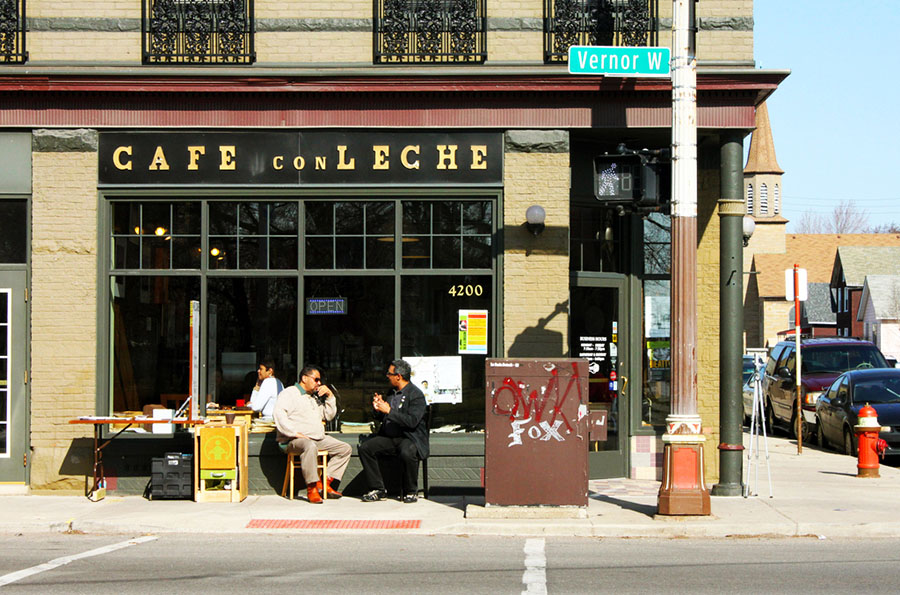
Engagement leaders also created “HomeBase”—an “open door” public office and meeting space for hosting community events and informal, face-to-face conversations. Multiple communications also occurred through HomeBase’s phone lines and its website, as well as social media platforms. There were regular “community conference calls,” where people from across the city dialed in with their ideas. There was even an online gaming platform called Detroit 24/7, where players earned points for contributing ideas for planning Detroit’s future. To help bridge the city’s digital divide, designers created a “roaming iPad station,” so citizens from different neighborhoods could play the Detroit 24/7 game.
Launching such an ambitious engagement strategy did run into potholes, as issues such as setting priorities strained relations between the government and the public. Government officials initially wanted a short-term approach, which would have consisted of four town hall meetings. But the response to the first town hall was so great—more than 1,000 people showed up—that other stakeholders pushed for a longer-term engagement strategy that was more aligned with the decades-long strategic framework.
Kresge, in partnership with other funders, used its positioning and capital to help ensure that the people owned the strategy, by eliciting tens of thousands of their voices. One important outcome of all that engagement was the creation of Detroit Future City. DFC also works to ensure that as the strategy unfolds, residents will continue to be engaged and local coalitions will continue to identify opportunities to accelerate progress— regardless of who’s leading the city’s government. In this way, Detroit residents stand a better chance of having an informed strategy that addresses their needs as the city evolves.
“When I think about the glue that will hold this city together, it’s Detroit Future City,” said Lewis Jackson. “They have an important voice, and they continue to update the plan and adapt it to new issues, such as COVID, and racial and economic equity. It’s not just the public sector making decisions. It’s also the community.”
Involving community from the “first mile” of the decisionmaking process, instead of just the last
Many of the peer funders have concluded, as Robin Hood did, that it is critical to loop grassroots, BIPOC leaders into the very beginning of the effort to set strategy, define funding priorities, or even make funding decisions. By involving constituents and nonprofits in more of the upfront decision making, funders tap into their knowledge of how things really work (and don’t work) in their communities.
When I think about the glue that will hold this city together, it’s Detroit Future City. ... It’s not just the public sector making decisions. It’s also the community.
To identify beyond-the-mainstream leaders who are working on the front lines to dismantle structural racism, The Miami Foundation included local Black leaders in the grantee nomination and selection committees for its fund for racial justice. Sourcing the wisdom of the community helped The Miami Foundation surface high-potential grantees, many of whom were “doing this work without the mantle of a nonprofit organization,” said Miami Foundation President Rebecca Fishman Lipsey. Moving forward, the funder is looking to enlist community members in sourcing efforts across its entire grantmaking portfolio.
In Houston, Houston Endowment put community members at the forefront when it got involved with the Harris County Dual Status Youth Initiative, a collective effort to pioneer pathways to better life outcomes for roughly 200 “dual status youth,” so named because they are involved in the county’s child protective and its juvenile justice systems. The effort brought together representatives from Harris County’s juvenile probation department, district courts, child welfare services, nonprofits, and one other vital constituency: dual status youth themselves.
At the very outset, the initiative involved those young constituents in the same way that social-impact efforts so often engage community members—as representatives of their communities, but beholden to other people’s priorities. That soon changed. “We wanted to be sure that young people were at the center of this work,” recalled Tonyel Edwards, a Houston Endowment program director. Adopting a constituents-as-partners mindset, the stakeholders created the Harris County Youth Collective (now known as the Collective Action for Youth), a collaborative that is advised by and run for dual status young people in Texas’s most populous county, which includes Houston.
It took a lot of commitment to create the space for young people to step up and show their power.
Young people like Dieter Cantu, the youth collective’s project manager at the time (he's now Collective Action for Youth's youth justice director), took a lead in helping the organization establish its priorities. Cantu witnessed drug abuse and domestic violence while growing up and was removed from his home and eventually incarcerated— life experiences that directly informed the collective’s creation. Today, Cantu and his peers are working to ensure that dual status young people get the health and education support they need as they transition to adulthood.
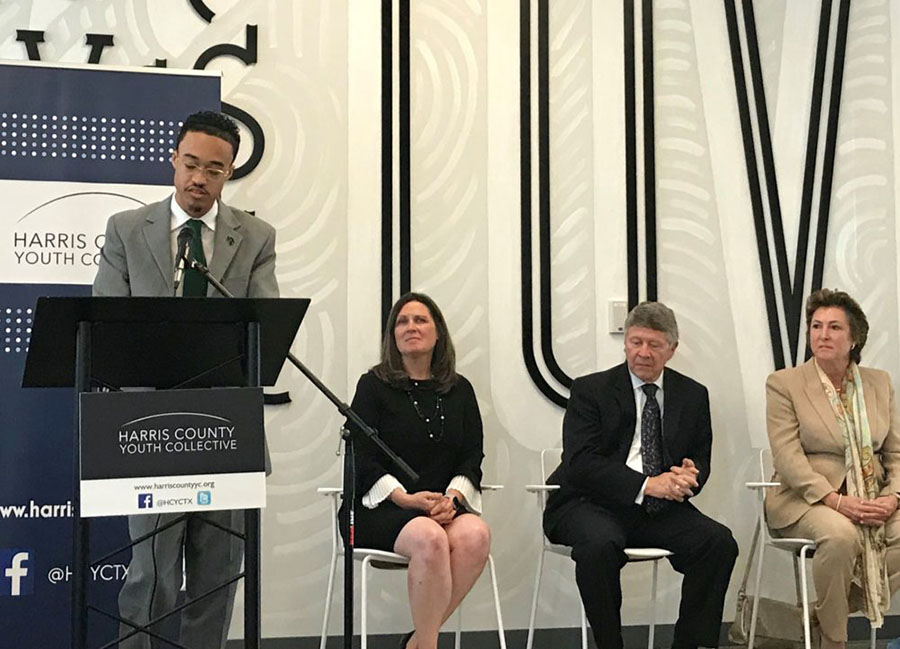
For example, as a result of a $750,000 investment from Houston Endowment, the youth collective began to build the infrastructure—such as hiring staff with lived experience and redesigning organizing efforts—to create a new entity dedicated to organizing in communities most affected by the juvenile justice and child protective systems. “It took a lot of commitment to create the space for young people to step up and show their power,” said Lisa Hall, Houston Endowment’s vice president of program strategy.
In Seattle, Seattle Foundation has engaged local BIPOC leaders in its grantmaking strategy and decisions. For the region’s COVID-19 Response Fund, Seattle Foundation established a Community Advisory Group of 23 members, composed almost exclusively of BIPOC leaders of local grassroots organizations. In this way, the advisory group reflected the communities most impacted by COVID-19.
To shape the group’s composition, SeaFdn drew from its network of trusted local leaders—a network that it stitched together across years of building relationships with leaders in Seattle’s BIPOC neighborhoods. The foundation then used this same group to advise its Fund for Inclusive Recovery.
For both funds, the Community Advisory Group had sufficient decision-making power to determine focus areas and approve strategies. In other words, they weren’t simply advisors—they were also deciders. This led to a stronger approach, which reinforces the importance of centering communities most impacted and working with trusted partners.
For example, when the group was asked to prioritize among a set of issue areas (such as education, employment, and housing) for the Fund for Inclusive Recovery, one of the members questioned the “white supremacist approach to pitting our communities’ needs against one another. We need investments in all of these areas.” They elevated two new priorities that put the fund on a different path: support BIPOC-led organizations working on behalf of BIPOC communities and build power within those communities.
Bringing relevant experience to teams, including experiences as members of the communities they seek to serve
One way to build authentic relationships with BIPOC communities is to have staff and leaders who reflect those communities. Deep subject matter expertise matters a lot; so, too, does the experience of people who have lived in under-resourced communities. Ballmer-Los Angeles’s Revoyr built a team that is experientially as well as racially diverse.
You can’t overstate the value of having folks that represent the community you’re serving, making decisions about how the resources flow.
“You can’t overstate the value of having folks that represent the community you’re serving, making decisions about how the resources flow,” said Revoyr. “Folks with lived experiences, folks with a blend of direct service, from the advocacy world, and folks who have worked within the system. To give one example: our education portfolio manager, Nadia Diaz Funn, grew up in East LA, went to LA public schools, was a first-generation Latina college student, worked for LAUSD [Los Angeles Unified School District], led the Alliance for a Better Community, and worked for the Annie E. Casey Foundation. Nadia walks into any community conversation in East LA and she’s immediately credible—her family still lives there.
“The credibility that our team members have with grantees within the community is so important,” Revoyr continued. “In terms of the information we get, the ability for people to be frank and honest, in terms of holding us accountable. If you really want to have relationships with people on the ground, you have to have people who can build relationships. There’s no shortcut to this. It’s about relationships and making the time. And the folks on my team give that time, they give of themselves.
“I see philanthropy after philanthropy not hiring people who reflect the communities they serve. For me, it was critical to hire someone from Los Angeles who lives the mission. It seems like such a no-brainer.”
Andrea Sáenz of The Chicago Community Trust described the organizational dynamic with leaders of color: “We have leadership with broad diversity, including African American and Latinx leaders, so there’s often a connection with the communities we serve because of our own lived experience. We feel this work personally, not just professionally. There’s a difference in the ways we can talk about race and racism internally, compared with many peer organizations.”
Questions for Reflection and Action
- How are you acknowledging and adjusting the power dynamic with your grantees and with community members?
- What tactics might you use to learn from community members and how open are you to critical feedback? How can you structure ongoing community engagement with the most under-represented groups in your community?
- When in your decision-making processes do you seek community perspective, both to review proposed strategies and/or to shape them? What opportunities are there to bring in the community’s perspective earlier in the process?
- Can the makeup of your team better reflect the communities you seek to serve?
Where Might Race and Place-based Philanthropy Go from Here?
The peer-learning cohort of 12 place-based funders who shared their real-world knowledge across this series of five articles came together during one of the most tumultuous times in modern American history. A pandemic that infected millions of Americans and killed hundreds of thousands. The nation-spanning protests in the wake of George Floyd’s murder. The insurrection at the Capitol. The unavoidable evidence of deep, systemic racism, which once again boiled to the surface.Through it all, as the peer funders grappled with some of the fundamental questions that confronted so many place-based funders during that time of crisis (and will undoubtedly confront them in the crises yet to come), the participants surfaced dozens of tactics and practices for benefitting many more under-resourced communities. An array of new options, as well as those that are known to at least some other funders, is often what it takes to fuel renewal. Because, as Seattle Foundation’s Kris Hermanns put it, there is no such thing as a one-size-fits-all solution.
“There isn’t ‘an answer,’” said Hermanns. “Especially in a time that feels incredibly hard and raw, it’s really nice to try and find an answer. To have something that you can grasp. What’s helpful with this learning community is that you find your answers based on the wisdom and experience, and even f-bombs that people are willing to share. And you think about how you distill and translate that experience.”
This series is intended to be an entry point in keeping that conversation going. We hope you find something to apply to your work, something to help reframe a problem, or something to share—or even debate—with your colleagues. If you have a practice or insight to extend to the rest of us, please reach out to Debby Bielak, one of this paper’s co-authors ([email protected]). We will use your feedback as we figure out next steps for sharing what we’re learning about how place-based funders are leaning into more effective, more equitable philanthropy.
Debby Bielak and Darren Isom are partners in The Bridgespan Group’s San Francisco office. Marion Michieka is a senior associate consultant in the same office. Editorial Director Bill Breen is based in Bridgespan’s Boston office. The authors thank Bridgespan Senior Advisor Nan Stone for her guidance throughout this project.

